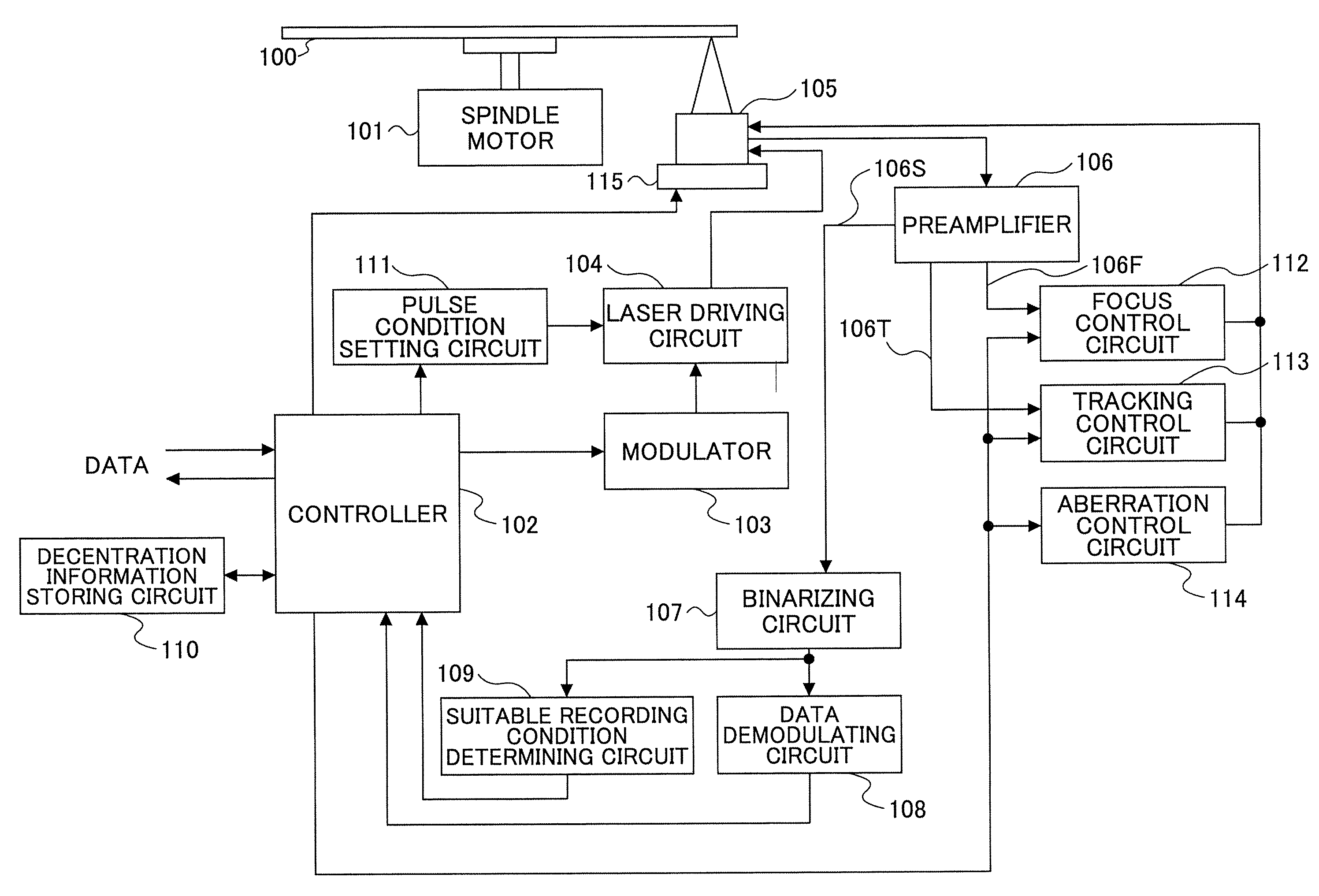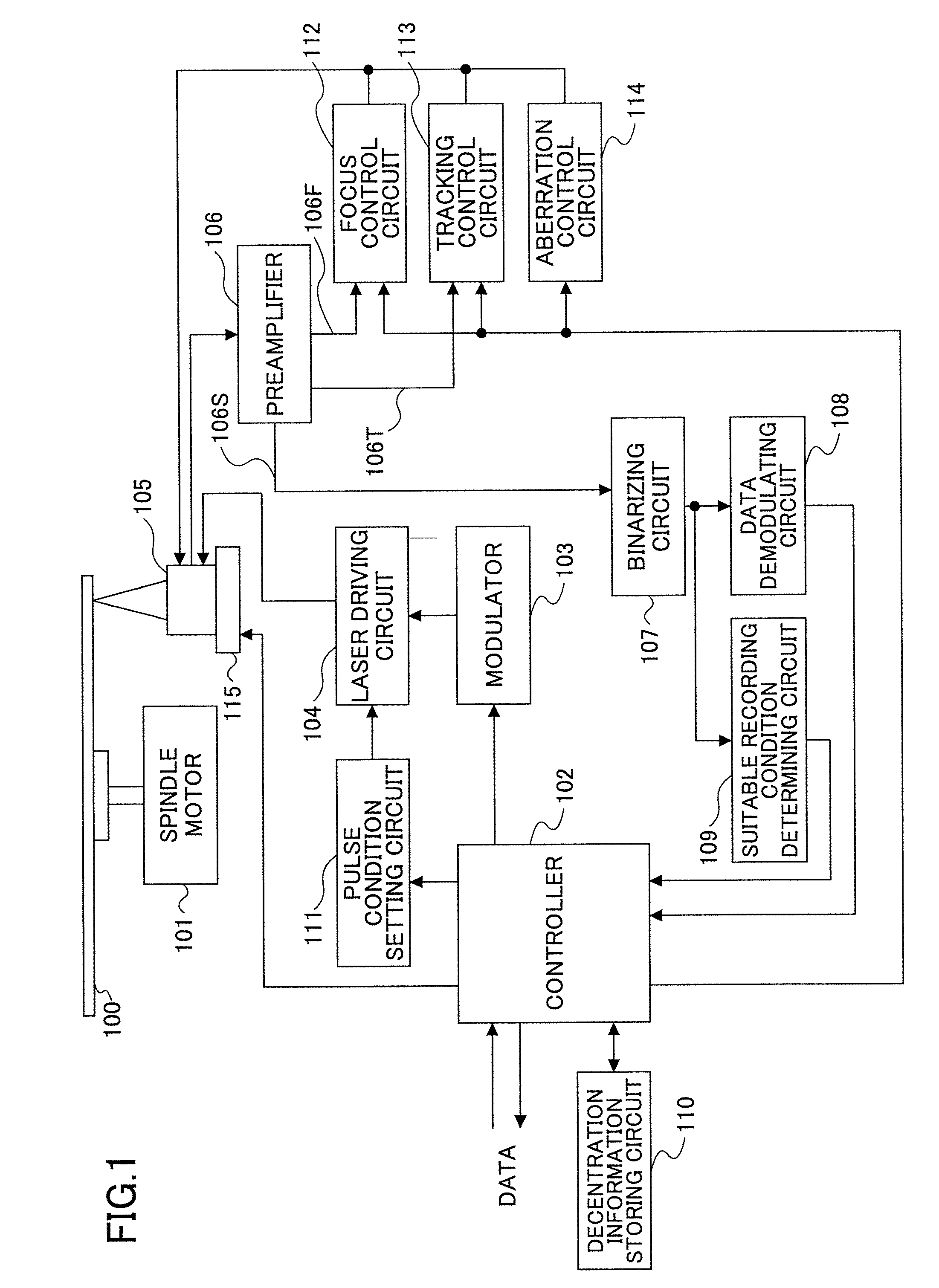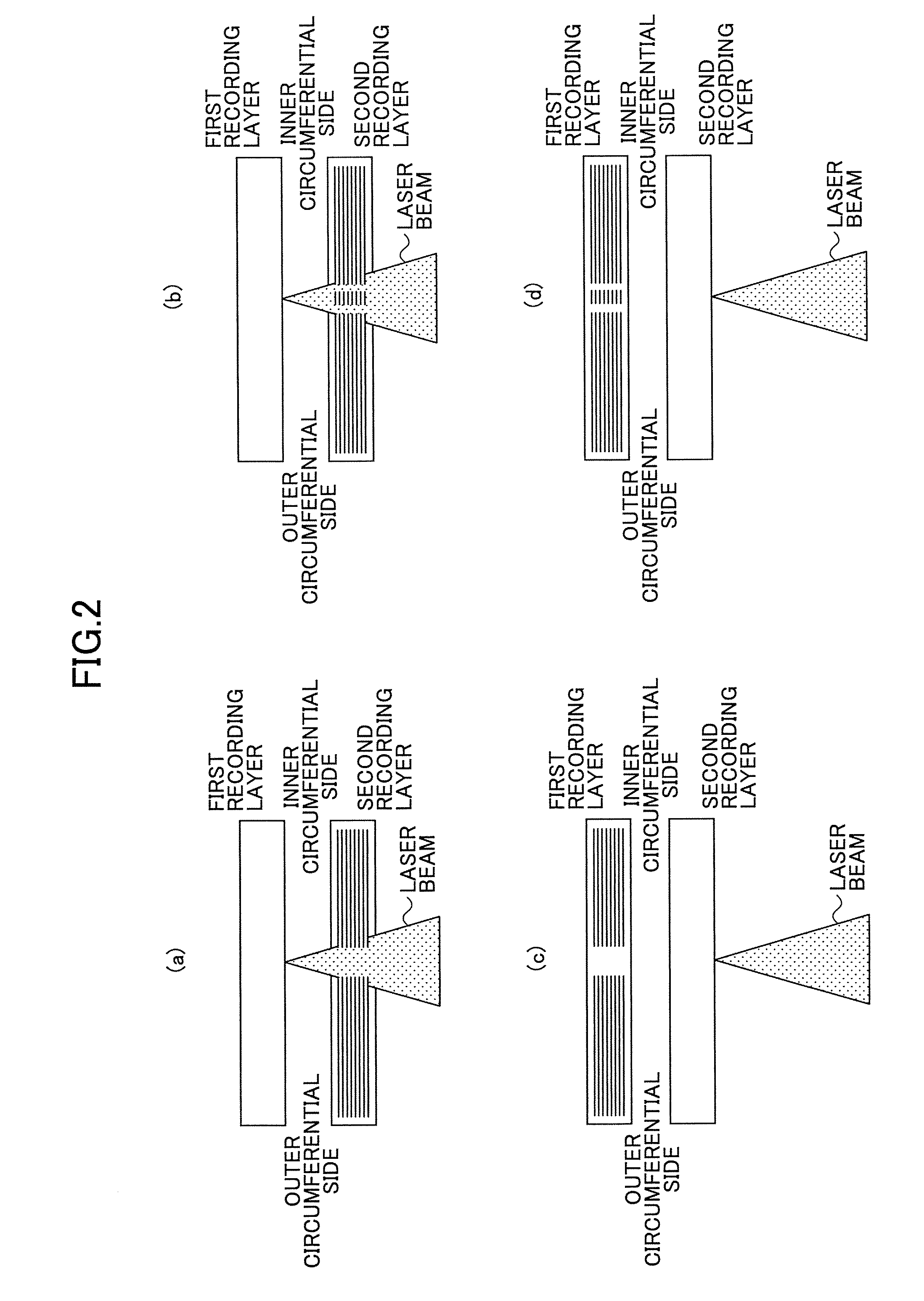Method of recording data in multilayered recordable optical recording medium, recording and reproducing apparatus for recording the data in the recording medium and the recording medium
a multi-layer recordable optical recording medium and recording apparatus technology, applied in mechanical recording, recording signal processing, instruments, etc., can solve the problems of large-scale hard disk development, insufficient recording capacity, and insufficient blue laser medium capacity, so as to achieve suitable recording conditions and effectively utilize recording capacity.
- Summary
- Abstract
- Description
- Claims
- Application Information
AI Technical Summary
Benefits of technology
Problems solved by technology
Method used
Image
Examples
first embodiment
[0103]FIG. 1 is a block diagram showing a recording and reproducing apparatus according to a first embodiment of the present invention.
[0104]In FIG. 1, a multilayered recordable optical recording medium 100 (disk) has been attached to the recording and reproducing apparatus.
[0105]As shown in FIG. 1, the recording and reproducing apparatus includes a spindle motor 101, a controller 102, a modulator 103, a laser driving circuit 104, an optical head 105, a preamplifier 106, a binarizing circuit 107, a data demodulating circuit 108, a suitable recording condition determining circuit 109, a decentration information storing circuit 110, a pulse condition setting circuit 111, a focus control circuit 112, a tracking control circuit 113, an aberration control circuit 114, and a moving unit 115.
[0106]The spindle motor 101 drives the multilayered recordable optical recording medium 100. The controller 102 controls operations of the recording and reproducing apparatus. The modulator 103 modulat...
second embodiment
[0171]FIG. 17 is a block diagram showing a recording and reproducing apparatus according to a second embodiment of the present invention. In the second embodiment of the present invention, when an element is similar to or the same as that in the first embodiment of the present invention, the same reference number as that in the first embodiment of the present invention is used for the element, and the same description as that in the first embodiment of the present invention is omitted.
[0172]As shown in FIG. 17, when the block diagram shown in FIG. 17 is compared with that shown in FIG. 1, a decentration amount detecting circuit 116 is newly added to the second embodiment of the present invention. The decentration amount detecting circuit 116 detects a decentration amount of each recording layer based on a tracking signal from the tracking control circuit 113.
[0173]First, the recording and reproducing apparatus initializes the multilayered recordable optical recording medium 100. Spe...
third embodiment
[0203]FIG. 24 is a schematic diagram showing a first case of test recording according to a third embodiment of the present invention.
[0204]In the first case of the third embodiment of the present invention, data have been recorded in all parts of the data area of the first recording layer after the first test recording; therefore, second test recording is executed from the second recording layer.
[0205]In the first and second embodiments of the present invention, when a multilayered recordable optical recording medium 100 is attached to a recording and reproducing apparatus, test recording is executed in all the recording layers of the multilayered recordable optical recording medium 100, and suitable recording conditions are determined in each of all the recording layers.
[0206]However, in the third embodiment of the present invention, when actual recording is requested, the OPC process may be applied only to a recording layer (farthest recordable recording layer) where the actual re...
PUM
| Property | Measurement | Unit |
|---|---|---|
| area | aaaaa | aaaaa |
| shifting distance | aaaaa | aaaaa |
| β | aaaaa | aaaaa |
Abstract
Description
Claims
Application Information
 Login to View More
Login to View More - R&D
- Intellectual Property
- Life Sciences
- Materials
- Tech Scout
- Unparalleled Data Quality
- Higher Quality Content
- 60% Fewer Hallucinations
Browse by: Latest US Patents, China's latest patents, Technical Efficacy Thesaurus, Application Domain, Technology Topic, Popular Technical Reports.
© 2025 PatSnap. All rights reserved.Legal|Privacy policy|Modern Slavery Act Transparency Statement|Sitemap|About US| Contact US: help@patsnap.com



